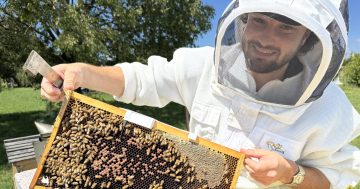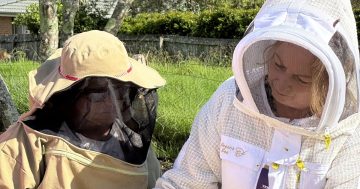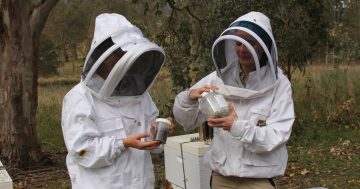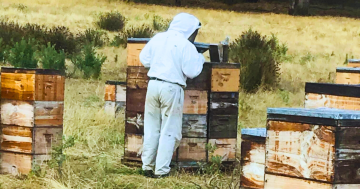
Field teams from NSW DPI and Local Land Services have been testing hives within the surveillance zones to help eradicate varroa mite. Photo: NSW DPI Biosecurity Facebook.
The “do not move” order for all NSW beekeepers has been amended as the state continues to battle against a destructive varroa mite outbreak.
The state-wide emergency order was altered to allow beekeepers outside the red eradication zone to work their hives.
Collector beekeeper and owner of Polie’s Honey Gary Polie said while winter wasn’t a key honey collecting time for the southern region, it would be welcome news up north.
“They’ll already be seeing spring-like conditions, so they’ll need to start swarm control shortly,” he said.
“A big part of our job is to make sure that doesn’t happen, so when a hive breeds up and gets too big, we artificially swarm them, take half the bees and put them into a new box.
“If they do swarm, they then take off into the bush and if an infected hive does that it would just exacerbate the whole problem, it would be the last thing they’ll want to have happen.”
However Mr Polie said the announcement did send an important signal to all beekeepers ahead of the multi-million-dollar almond pollination season.
“The impending August deadline for almond contracts is in a few weeks, so we’re on the verge of something happening,” he said.
“They’re employing an extra 26 DPI inspecting officers, so this could mean we could see movement permits issued for those with almond contracts … we’re anticipating stricter controls of the movements of hives and a permit system.
“They’ll be getting the industry moving again to fulfil those pollination contracts. That’s the way it reads and how we’re interpreting it.”
The Australian Honey Bee Industry Council’s Danny Le Feuvre welcomed the latest changes to the emergency order.
“The removal of the ‘do not tamper’ component in the order is important to ensure beekeepers can manage their hives,” he said.
“This decision is a measured risk-based approach and will allow beekeepers to prevent swarming as we get closer to spring.
“It is important we balance the risk of spread and business continuity for the rest of the state.”
NSW Department of Primary Industries (DPI) chief plant protection officer Dr Kathy Gott said current measures were working to prevent the parasite from taking over.
“We are committed to working with industry and the community to eradicate varroa mite in NSW,” she said.
“Working with beekeepers across the state, the measures we have put in place have proven to be effective in slowing down this threatening incursion.”
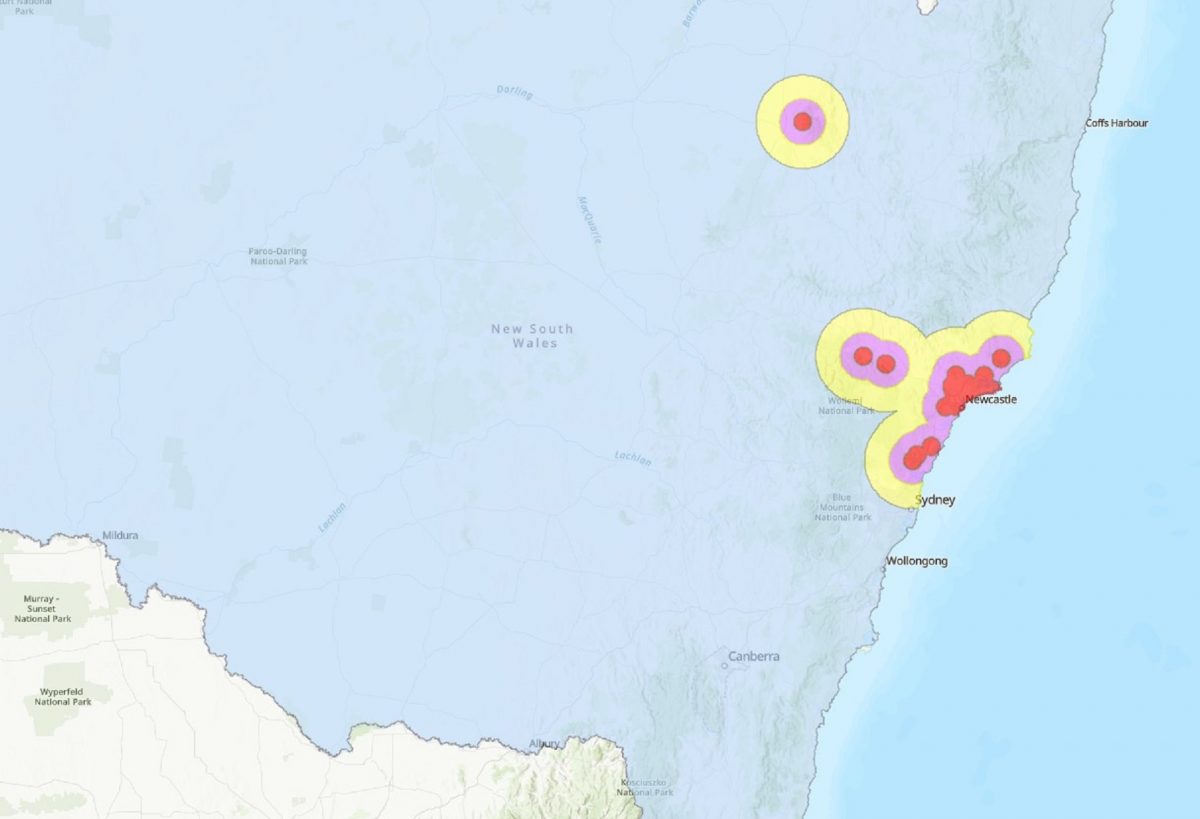
The varroa mite emergency zone map as of 12 July. Photo: NSW DPI.
The changes mean beekeepers in the blue zone could now remove frames for honey extraction provided:
- The beekeeper’s shed and apiary were in the same emergency zone
- The beekeeper took all practicable measures to clear all bees from the supers (an upper-storey hive box that stores surplus honey)
- Honey supers on trucks/utes were bee-proof before leaving the site and remained bee-proof until arriving at the shed
- Supers were transited directly to their shed and stored in an enclosed shed
- Trucks/utes were thoroughly cleaned of any honey and wax once unloaded
It would also allow for empty supers to be placed on hives as long as:
- Beekeepers only transported the super from the shed to one apiary. Beekeepers could not load supers and then visit multiple apiaries
- The supers had been in the shed for 21 days prior and had no contact with bees during the 21 days
- Supers could not go from a shed to an apiary if the shed and apiary were in different biosecurity zones
The changes did not apply to beekeepers in the red eradication zone and don’t permit the movement of hives, brood boxes, nucleus hives, packaged bees and queen bees anywhere in NSW.
Meanwhile an $18 million compensation package has been developed for registered beekeepers impacted by the varroa mite outbreak. It would see registered commercial beekeepers reimbursed for all equipment, hives and bees that were destroyed as part of the eradication process, as well as the costs of honey. It would also fund the extra 26 DPI officers.
As of 12 July, 38 varroa mite-infested premises have been identified in NSW. This was since the mite was first detected at the Port of Newcastle on 22 June. Currently all cases are epidemiologically linked.
More information about the NSW DPI’s varroa mite response can be found online.







